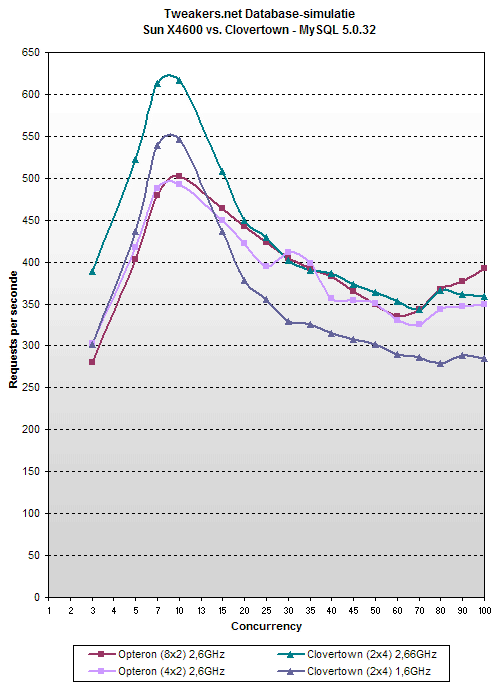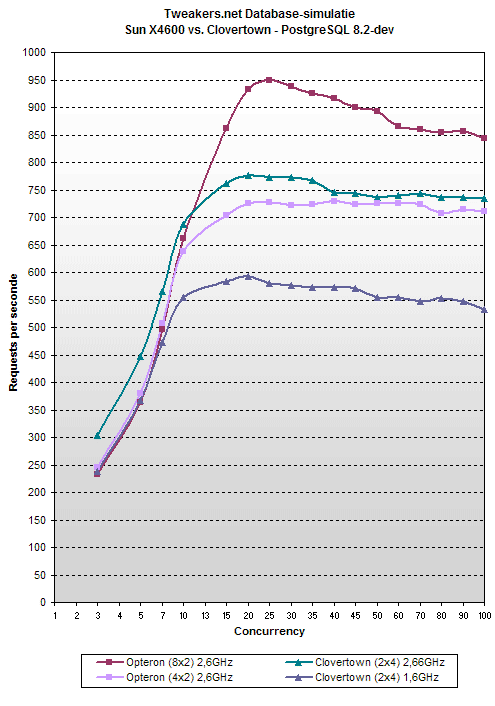We have seen that running a system on four or eight processors is not a straightforward matter: a large HyperTransport network appears to be sensitive to the way in which the software has been put together. Although we have seen troublesome scaling behaviour before in smaller systems, this is the first time we are seeing really drastic negative effects when the number of cores are doubled. Possibly, this is a problem that all servers run into, but unfortunately we do not have any other results in the same hardware class. What we can do, is compare the X6400 to Intel's quadcore. Beside the new Fujitsu TX200 with 1.6GHz processors, we draw the 2.66Ghz version which we reviewed earlier into the equation.
In MySQL 5.0.32 we see that two Clovertowns do not perform badly at all compared to four or even eight Opterons, in spite of AMD having twice as much bandwidth per core at its disposal. At the same time, it turns out that a 2.66GHz Clovertown with a 1333MHz bus is only 17% faster than a 1.6GHz model with a 1066MHz bus, while the former is more than twice as expensive. Though this sort of imbalance is nothing new in the world of computers, it's good to be reminded of it every now and then.

In the PostgreSQL 8.2-dev graph, we see a more logical picture, where the system with eight Opterons is clearly on top. Even though this looks a good deal better for the X4600, questions remain as to the extent to which it can really be called positive. After all, the top model Clovertown duo goes for 2344 dollar while the Opteron octet that we tested costs no less than 9320 dollars. Add to that the fact that a pair of 2.66GHz Clovertowns burn up a total of 240 Watt together and tend to fit into a 1U box, while the eight Opterons have a total TDP of 760 Watt and take up 4U. Although this is a somewhat simplistic comparison, it should be clear that for most companies, investing in a well-equipped X4600 isn't really justifiable when based on a performance gain of 19%.

